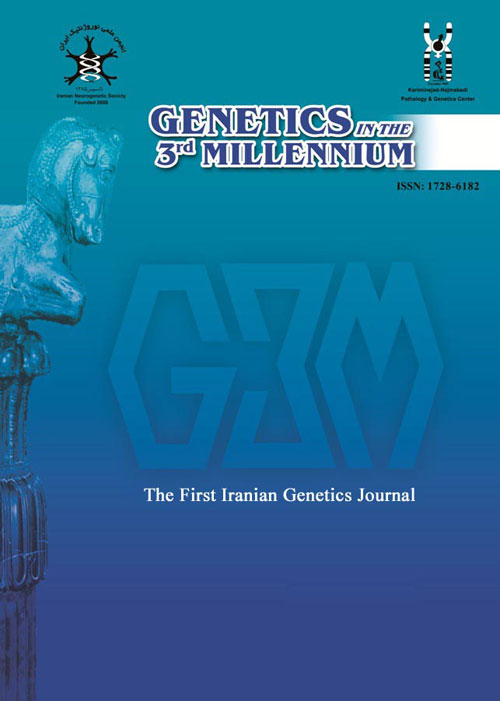Optimizing the Cultural Condition of BL21 Competent Cells for Production of Recombinant Peroxisomal Protein
Author(s):
Abstract:
GST tagging is a valuable tool for quick detection, isolation, and analysis of protein-protein interactions, without prior knowledge of the target protein. The GST tag, as the most widely used tag with 27 kD weight, can be used for detection and/or purifying unknown interacting partners of bait protein. Previous studies have indicated that the peroxisomal protein (PEP), a recently characterized protein, is somehow involved in neural differentiation of embryonic stem cells. The aim of this study was efficient production and purification of the recombinant peroxisomal protein fused with the GST tag in bacterial competent Ecoli cells for further analysis to understand the special proteins which directly interact with PEP. Recombinant prokaryotic expression vector (pGEX6P2) encompassing Glutathione S-transferase (GST) cDNA fused with peroxisomal protein cDNA was transformed in BL21 Escherichia coli cells. E. coli cells, separately expressing GST and GST-PEP fusion protein were examined for efficient protein production. At first, various concentrations of isopropyl-b-D-thiogalactoside (IPTG) were added to the culture medium to optimize the induction condition. Next, cells were allowed to culture in different temperatures post induction. Finally, cells were ruptured in 600 µl of chilled Tris-HCl (pH: 7.5) containing 1 mM phenylmethylsulfonyl Fluoride (PMSF), in the presence of different concentrations of detergents (Triton X-100 or NP40), and sonicated. Sonication was done using different strengths of the ultrasonic probe. The lysate cells were centrifuged. The supernatant fraction was collected and incubated with 15 µl of 50% slurry glutathione-Sepharose at 4 °C for 3h. Glutathione-Sepharose beads were washed three times and resuspended in the same buffer for SDS-PAGE electrophoresis. Sepharose beads linked with glutathione were then used for binding and pull down of GST-PEP fusion protein. Fifteen µl of elution subjected to the gel and gel was stained with commasie brilliant blue (CBB) in order to detect the protein bands. The optimum gene expression was found when IPTG was added to the final concentration of 0.1 µg/ml bacterial cell culture overnight. We found no difference between Triton X-100 and NP40 usage as solublizing detergents. However, the best concentration for detergent was set to be 1% (V/V).
Language:
Persian
Published:
Genetics in the Third Millennium, Volume:9 Issue: 2, 2011
Page:
2386
magiran.com/p928505
دانلود و مطالعه متن این مقاله با یکی از روشهای زیر امکان پذیر است:
اشتراک شخصی
با عضویت و پرداخت آنلاین حق اشتراک یکساله به مبلغ 1,390,000ريال میتوانید 70 عنوان مطلب دانلود کنید!
اشتراک سازمانی
به کتابخانه دانشگاه یا محل کار خود پیشنهاد کنید تا اشتراک سازمانی این پایگاه را برای دسترسی نامحدود همه کاربران به متن مطالب تهیه نمایند!
توجه!
- حق عضویت دریافتی صرف حمایت از نشریات عضو و نگهداری، تکمیل و توسعه مگیران میشود.
- پرداخت حق اشتراک و دانلود مقالات اجازه بازنشر آن در سایر رسانههای چاپی و دیجیتال را به کاربر نمیدهد.
In order to view content subscription is required
Personal subscription
Subscribe magiran.com for 70 € euros via PayPal and download 70 articles during a year.
Organization subscription
Please contact us to subscribe your university or library for unlimited access!



